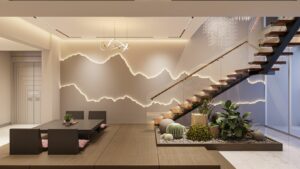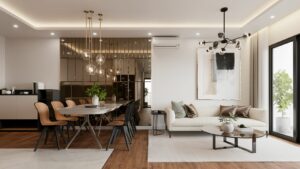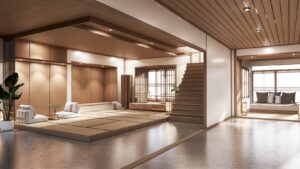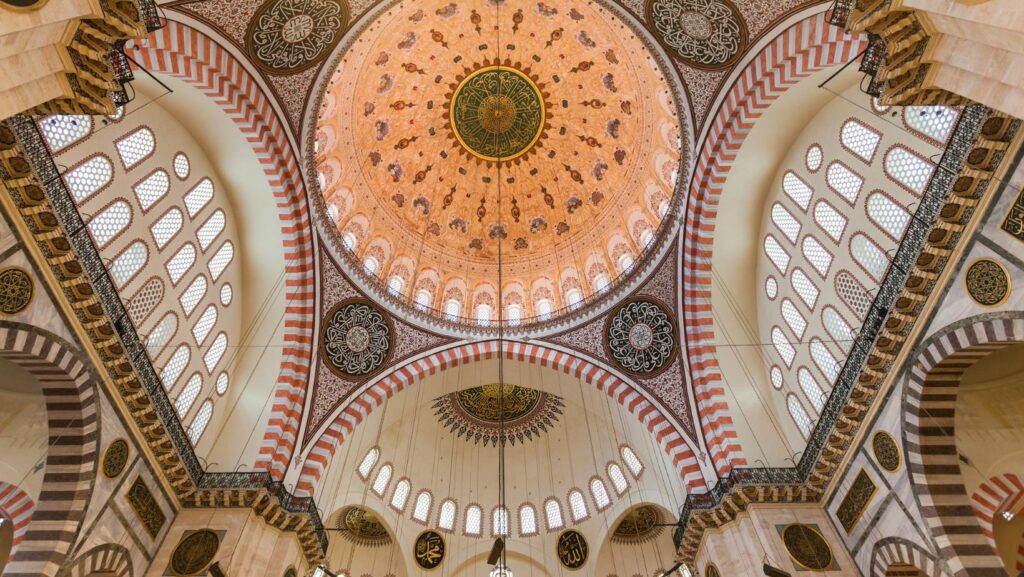The 1990s were a defining decade for interior design, marked by a mix of styles that ranged from the minimalist to the eclectic. As the world leaned into the digital age, living rooms across America reflected a new era of comfort and expression. This era’s design elements offer a nostalgic appeal that resonates even in today’s modern homes.
In exploring 90s living room decor, one encounters a palette of earth tones, pastel hues, and bold geometric patterns. Furniture pieces were often chunky and comfortable, inviting long hours of family time or television watching. These spaces weren’t just rooms; they were the backdrop for the era’s burgeoning pop culture and technological advancements.
For anyone looking to infuse their home with a touch of 90s nostalgia or simply understand the roots of some of today’s emerging trends, diving into the characteristics of 90s living room design is both enlightening and inspiring.
Living Room 90s Interior Design
Color Trends of the 90s
 The 1990s introduced a dynamic range of color palettes, particularly in living room interiors, where both minimalism and vibrancy found a place. Dominated by earth tones like beige, rust, and forest green, these colors provided a warm backdrop that invited relaxation and comfort. Pastel hues were also prominently featured, offering soft, soothing alternatives that complemented the natural materials popular at the time. For those with a penchant for flair, bold primary colors such as deep blues, reds, and yellows made strong statements, often incorporated through accent pieces like throw pillows and wall art.
The 1990s introduced a dynamic range of color palettes, particularly in living room interiors, where both minimalism and vibrancy found a place. Dominated by earth tones like beige, rust, and forest green, these colors provided a warm backdrop that invited relaxation and comfort. Pastel hues were also prominently featured, offering soft, soothing alternatives that complemented the natural materials popular at the time. For those with a penchant for flair, bold primary colors such as deep blues, reds, and yellows made strong statements, often incorporated through accent pieces like throw pillows and wall art.
Popular Furniture Styles
Furniture of the 1990s living room often emphasized comfort and size, with oversized sofas and plush armchairs becoming staples in many households. These pieces were typically upholstered in heavy fabrics like suede and velvet, enhancing the feeling of comfort that was central to the design ethos of the period. Coffee tables and entertainment units in light-colored woods such as pine and oak were commonplace, echoing the era’s inclination towards more natural styles. Modular furniture also began to rise in popularity, reflecting the decade’s growing focus on adaptability and personalization in living spaces.
Influential Designers of the 90s
Notable Interior Design Figures
 The 1990s boasted several influential designers who left indelible marks on the aesthetic of living rooms. Designers such as Philippe Starck, Terence Conran, and Donna Karan emerged as pivotal figures. Philippe Starck was renowned for his inventive and minimalist designs, often incorporating elements that combined functionality with a sleek, streamlined appearance. For instance, his use of molded plastic and bold geometric shapes influenced the way people perceived furniture as both practical and artistic.
The 1990s boasted several influential designers who left indelible marks on the aesthetic of living rooms. Designers such as Philippe Starck, Terence Conran, and Donna Karan emerged as pivotal figures. Philippe Starck was renowned for his inventive and minimalist designs, often incorporating elements that combined functionality with a sleek, streamlined appearance. For instance, his use of molded plastic and bold geometric shapes influenced the way people perceived furniture as both practical and artistic.
Terence Conran made significant contributions through his philosophy of comfortable and accessible living spaces. His designs emphasized natural light and open layouts that promoted a relaxed living environment. Conran’s influence extended through his books and the homeware chain, Habitat, where he showcased how to combine simplicity with elegance.
Donna Karan brought a fashion-forward approach to interior design, emphasizing comfort, luxury, and practicality. Her designs featured soft textiles, neutral palettes, and a focus on creating serene, inviting atmospheres. Karan’s approach demonstrated that one’s living space could indeed mirror fashion sensibilities, blending aesthetics with personal comfort.
How Designers Shaped Trends
 In the 1990s, designers played crucial roles in shaping interior design trends, particularly in living rooms. Their innovative approaches transformed traditional spaces into stylish showcases that balanced both form and function. The introduction of elements like modular furniture by designers, such as Patricia Urquiola and Antonio Citterio, allowed homeowners to customize their environments according to their preferences and needs, which facilitated diverse living room layouts.
In the 1990s, designers played crucial roles in shaping interior design trends, particularly in living rooms. Their innovative approaches transformed traditional spaces into stylish showcases that balanced both form and function. The introduction of elements like modular furniture by designers, such as Patricia Urquiola and Antonio Citterio, allowed homeowners to customize their environments according to their preferences and needs, which facilitated diverse living room layouts.
This era’s focus on simplicity and minimalism was largely propagated by figures like John Pawson, whose work demonstrated the power of minimal environments and how they can evoke calm and clarity. Pawson’s influence can be seen in the clean, uncluttered lines and monochromatic color schemes that became synonymous with the 90s aesthetic.
Moreover, these designers fostered a culture of innovation that integrated technology into the home. Michael Graves, for example, experimented with new synthetic materials and vibrant colors that appealed to a modern audience seeking freshness and playfulness in their living spaces.
As a result, the 1990s interior design, particularly in living rooms, mirrored broader cultural trends, embracing a mix of comfort, customization, and minimalism. These designers not only contributed to the look and feel of the spaces but also influenced how these spaces functioned to accommodate everyday living. Their legacies persist, influencing contemporary design by blending aesthetics with practicality.

